Nearly all parents would do just about anything for their children, and that includes feeding them the best that stores have to offer. In fact, 47% of parents make sure at least half of the food they load into their grocery carts is organic (1). So says the Organic Trade Association’s newly released U.S. Families’ Organic Attitudes & Beliefs 2014 Tracking Study, which surveyed more than 1,200 families with at least one child under 18.
Organic-shopping moms and dads spent a little more at the store than those not buying organic ($125 per week, versus $110 a week, on average). Nonetheless, 51% of parents in this year’s survey cited cost as the main reason why they didn’t buy more organic foods.
Perhaps the best way to meet the needs of ravenous families looking for organic and healthy options in your store is to keep your eye on these key market drivers and explain to customers why these items are worth any extra cost.
Driver 1: Snacks
If it feels like kids are constantly snacking, it’s probably because they are! Whereas kids 30 years ago ate about one snack per day, they reach for three snacks a day today, says Katie Jesionowski, cofounder of MySuperFoods, Summit, NJ, citing data collected by Mintel (2).
Snacks can be a great addition to the diet, but too few children choose nutrient-dense ones. Says Ben Mand, vice president of brand and marketing at Plum Organics, Emeryville, CA, “More than 30% of calories kids consume are coming from snacks, but unfortunately most snacks lack important nutrients kids need to grow up strong.”
few children choose nutrient-dense ones. Says Ben Mand, vice president of brand and marketing at Plum Organics, Emeryville, CA, “More than 30% of calories kids consume are coming from snacks, but unfortunately most snacks lack important nutrients kids need to grow up strong.”
Salty and sugary favorites combined with the sheer quantity of snacks that children consume was enough to make Jesionowski go in search of healthier options—especially for toddlers, older children and teens.
“There is a sharp decline in nutrient-dense food for kids once they outgrow baby food, where there are several accessible, organic, non-GMO options,” she states.
In answer, her firm developed soft granola bites packed with nutritious ingredients. “Our primary focus is nutrient density, using real superfoods, like blueberries, chia, amaranth and apples,” she states. “Doing so automatically allows us to achieve lower sugar, sodium and unhealthy fats than much of what is available in grocery stores.”
Keely Fadrhonc, senior marketing communications manager at Annie’s, Berkeley, CA, also is a believer in simple options for kids: “That’s why Annie’s products are made without artificial flavors, synthetic colors and preservatives regularly used in many conventional packaged foods.”
In the snacks category, “taste is king for kids,” says Mand. So while packing in nutrition with protein, fiber, calcium, vitamins and whole grains, the company also strives to make snacks in flavors that kids love. “Our goal is to make every bite matter more,” he states.
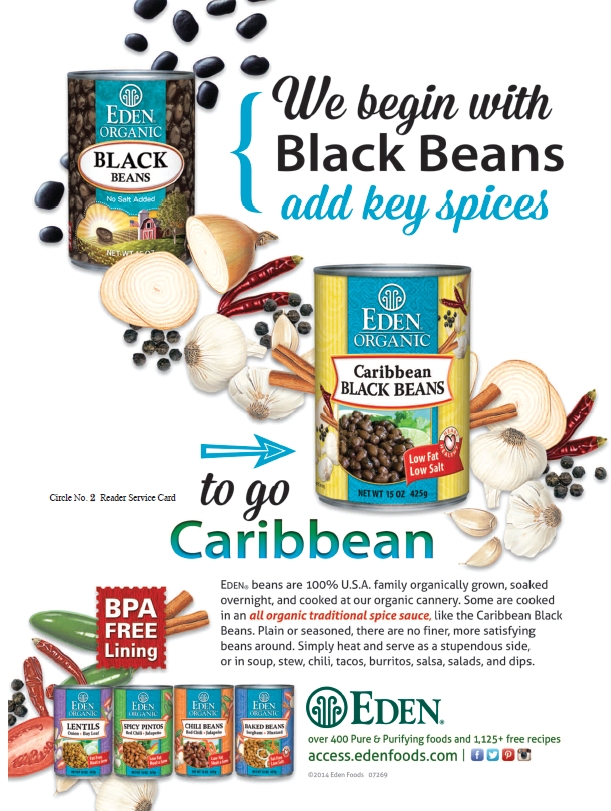 Another trend in kids’ snacks is an emphasis on fruits and vegetables in the form of squeezable pouches of mashed produce, dehydrated fruit/veggie snacks, dried produce and more. “We know there’s nothing better for you than real fruits and veggies, plain and simple,” says Camille Gardella, community relations manager for Little Duck Organics, Brooklyn, NY. “Despite what you may have heard, they’re actually really yummy just the way nature made them.”
Another trend in kids’ snacks is an emphasis on fruits and vegetables in the form of squeezable pouches of mashed produce, dehydrated fruit/veggie snacks, dried produce and more. “We know there’s nothing better for you than real fruits and veggies, plain and simple,” says Camille Gardella, community relations manager for Little Duck Organics, Brooklyn, NY. “Despite what you may have heard, they’re actually really yummy just the way nature made them.”
Produce gets a “bad rap” with some kids, as the least desirable part of a meal—partly for texture and partly for taste. So Gardella’s company cuts fruits and vegetables into fun, bite-sized pieces and freeze-dries them. “They’re deliciously crunchy and melt in your mouth,” she states, something many kids find irresistible.
So while some manufacturers are putting fruits and vegetables front and center, others are working them into recipes that you might not expect.
Driver 2: Stealth Fruits, Veggies and Grains
Companies are getting extremely creative about how they are adding fruits and vegetables to kids’ foods. Case in point: tea sweetened with fruits and vegetables like carrots and sweet potatoes!
Melinda Hicks, president of Big Time Tea and creator of Little Me Tea, Lawrenceville, GA, says her company was founded to “find a healthier drink option for kids that is much lower in sugar than anything on the market.”
She says her line starts with tasty, healthy teas like hibiscus and then gives them some extra punch with fruit juices (like pineapple, mango and apple) and vegetable juices for extra beta-carotene (like carrots and sweet potatoes). In the end, one serving has just six grams of naturally occurring sugar plus lots of antioxidants.
Other companies aren’t letting little ones get 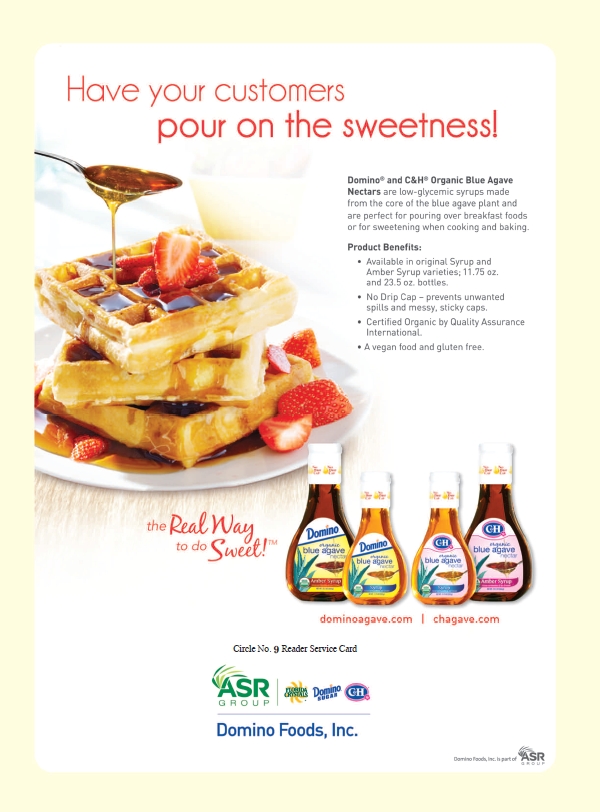 bored with plain old white rice baby cereal. Some companies are packing several grains into cereals like Happy Baby (HappyBelly multigrain has amaranth, quinoa and oats) and NurturMe (cereals with quinoa). Little Duck has another great option: its Mighty Oats infant cereal has a base of whole oat flakes, quinoa, buckwheat, millet and amaranth. “We add organic dried fruit powder to give our Mighty Oats their yummy flavor,” adds Gardella.
bored with plain old white rice baby cereal. Some companies are packing several grains into cereals like Happy Baby (HappyBelly multigrain has amaranth, quinoa and oats) and NurturMe (cereals with quinoa). Little Duck has another great option: its Mighty Oats infant cereal has a base of whole oat flakes, quinoa, buckwheat, millet and amaranth. “We add organic dried fruit powder to give our Mighty Oats their yummy flavor,” adds Gardella.
The category of ready-made meals for kids is also getting a makeover, with one example being products from Mom Made Foods, Alexandria, VA. According to Heather Stouffer, founder and CEO, “We use vegetables in our products for taste, nutrition and coloring. For example, Mom Made’s Cheesy Mac Meal is 100% organic and kids love it.”
This product, she explains, not only has the traditional cheese and milk, but also peas “for fun” and butternut squash and sweet potato purees to make it creamy and colorful. “We have received countless comments from customers telling us their kids love peas because of Mom Made’s Cheesy Mac,” says Stouffer.
Another unique way to offer fun nutrition is the company’s pocket-style meals (like Bean Burrito Munchie), which are made with several healthy organic ingredients such as beans, brown rice, cheese, corn and green bell pepper “to make it more nutritious,” says Stouffer. The pizza variety incorporates organic whole grains, organic sweet potato, organic butternut squash and organic cauliflower.
Annie’s has a similar technique, incorporating whole grains into everything from its mac and cheese to its pizza poppers. The company’s family-style frozen Butternut Squash Macaroni & Cheese “is made with whole grains and provides a half serving of vegetables per cup,” states Fadrhonc.
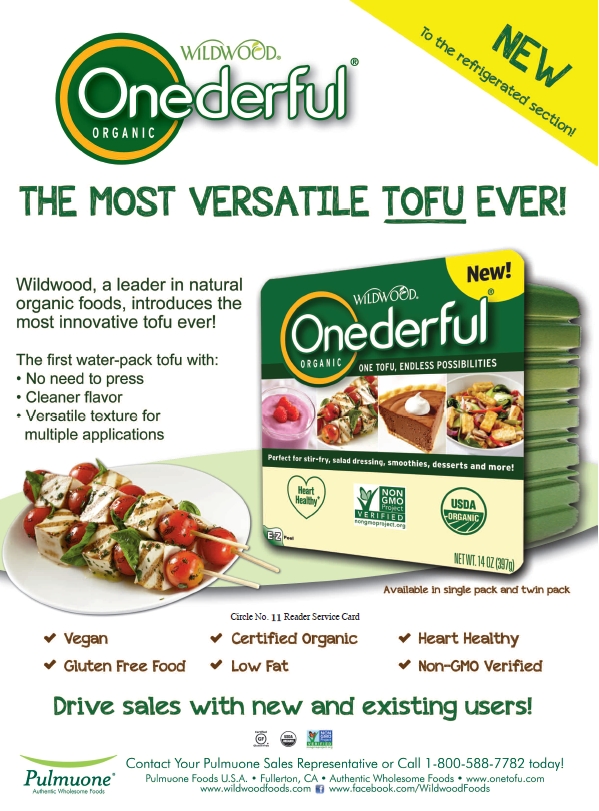 Even traditional fruit-derived snacks aren’t just fruit anymore. For instance, Little Duck Organics has a new Tiny Fruits + Veggies line that combines freeze-dried pineapple, apple and peas; NurturMe Yumaroos have combos like dried bananas, apples and broccoli; and Plum Organics has a Go Bar with whole grains, fruits and veggies like kale, carrot and sweet potato as well as chewy fruit snacks (Fruit & Veggie Shredz Rooty Blues) in varieties like Blueberry & Carrot and Super Apple (with carrot, pumpkin and kale) and more.
Even traditional fruit-derived snacks aren’t just fruit anymore. For instance, Little Duck Organics has a new Tiny Fruits + Veggies line that combines freeze-dried pineapple, apple and peas; NurturMe Yumaroos have combos like dried bananas, apples and broccoli; and Plum Organics has a Go Bar with whole grains, fruits and veggies like kale, carrot and sweet potato as well as chewy fruit snacks (Fruit & Veggie Shredz Rooty Blues) in varieties like Blueberry & Carrot and Super Apple (with carrot, pumpkin and kale) and more.
One company has made an entire line based on the concept of making vegetables (and fruits) more accessible to families. Frank Davis, founder and CEO of Activz, Orem, UT, says his company’s fruit and vegetable powders “can be quickly and easily added to foods kids are actually willing to eat—often without them noticing—to instantly boost the nutrition factor and get kids the vitamins and minerals they need to grow strong and healthy.” The company offers powdered beets, carrots, pumpkin, spinach, kale, sweet potato and mixed veggies.
The diverse offerings help parents give children a variety of nutrients in their diet. States Davis, “Vegetables all have unique nutrient profiles, so eating a diet that’s not varied may result in nutrient deficiencies…eating a varied diet results in varied benefits we need to claim whole-body, optimal health.”
But in the end, none of the companies interviewed for this piece want to “hide” veggies. Says Stouffer, “It’s important for children to be exposed to vegetables from a young age so that they learn to like them. We strive to educate kids about what they are actually eating, and do so by not hiding any ingredients.”
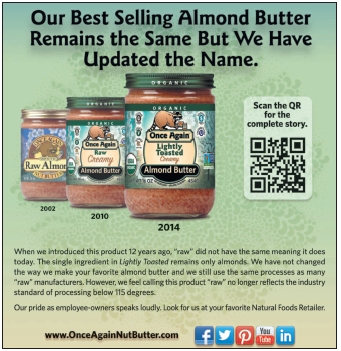
Driver 3: Healthy Drinks
In a world where soda, energy drinks and fruit cocktails are the norm in cafeterias, natural foods makers have been bringing interesting options to market.
“Water and milk are obvious first choices, but kids also like flavor. Too often, flavor means sugar,” states Heather Howell, chief tea officer of Rooibee Red Tea Company, Louisville, KY.
Tea makers have been making some headway here. According to a recent market research report from Packaged Facts (3), the tea market is projected to reach $25 billion by the end of this year, and “will depend heavily on the ability of food manufacturers and marketers to connect with children and their parents perhaps more than any other consumers.”
Little Me Teas, as previously mentioned, sells boxes of healthy kids’ caffeine-free iced teas with fruit and vegetable juice mixed in. Also, the sugar content is significantly less than what you’ll find in your run-of-the-mill juice box. “Kids can have three Little Me Tea juice boxes and still have less sugar in those three j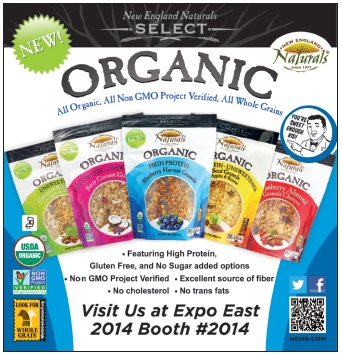 uice boxes than if they drank a full sugar 100% juice box,” states Hicks.
uice boxes than if they drank a full sugar 100% juice box,” states Hicks.
Christine Wheeler, CEO of Drazil Kids Tea, Edina, MN, also likes to use juice instead of sugar in kids' tea. "Juice is a perfect sweetener, as it contains natural sugars. Since kids already drink juice, infusing juice in our herbal teas made sense."
Getting the right mix of juice and tea took a significant amount of taste testing, she says. "Our current blend of 54% brewed herbal tea and 46% fruit juice was the perfect blend for a taste kids’ love," says Wheeler.
Also on the market is Rooibee Roo from Rooibee Red Tea Company. Howell says that the organic drink is low in sugar and sodium. “To make up for the reduced sugar, we slightly altered our formula increasing the rooibos flavor in Rooibee Roo, as compared to our parent line, Rooibee Red Tea,” she states. “It was a simple way to continue to entertain taste buds without sugar.”
She says that “rooibos is naturally caffeine free, so parents, teachers and babysitters can give it to children without worrying about them bouncing off the walls or drinking something that went through a chemical process to remove the caffeine.”
|
WEB EXCLUSIVE: Kid-Friendly Recipes Organic Spinach-Mango Baby Food Organic Pumpkin-Carrot Baby Food
|
Wheeler is also a fan of rooibos tea for kids. "Rooibos was a 'must-have' in our blend as it rivals green tea in its health benefits but is naturally caffeine-free," she states, noting, "We added hibiscus, rose hips and fruit to increase the variety of antioxidants and natural sweetness."
Another fun drink idea comes from Jesionowski, who suggests adding slices of strawberries, oranges or cucumbers to water. “Buy some new water bottles and throw in a bendy straw,” she says. “We all feel better when we drink a lot of water throughout the day. I try to teach my daughters WHY we drink water and drink a lot myself so it’s not just something I ‘make them do.’”
Gardella adds that coconut water is a great choice for replenishing electrolytes in active or dehydrated kids. “It’s naturally refreshing and has a sweet, nutty taste. It also has way less calories, sodium, sugar, and more potassium than a sports drink.
Davis says his company’s coconut water powder is made with a unique dehydration technology that helps the end product truly taste like coconut while supporting proper hydration. “Staying hydrated is especially important for kids, since they tend to be high-energy and have small bodies that can’t retain as much fluid as most adults’ bodies,” he says.
Driver 4: Omegas
From eye health to brain development, omegas are a must have for kids’ nutrition. In addition to taking omegas in supplement form, there are great ways to introduce these healthy fats into kids’ diets.
Jesionowski says her company’s granola bits include chia, and it’s also easy to add tablespoons of flax or chia seeds to smoothies. Another suggestion is serving edamame as a snack or with dinner. “It’s fun for my girls to pop open the shells and they always ask for more when it’s gone,” says Jesionowski “They can get a little more than a gram of omega-3s from one cup.”
Stouffer recommends feeding salmon to children. Even though kids can be picky about fish, Jesionowski says parents shouldn’t give up offering it regularly. “Studies show that kids’ preferences change and they often need 10–15 tries of something to fall in love with it,” she states. WF
|
EndCap Project: Back to School It’s August, and back to school promotions are right around the corner. Here are some ideas to help direct both kids’ and parents’ attention to some healthy kids’ foods. Several interviewees brought up suggestions to help out working parents. “As a working mother, I would like a display that has elements on Heather Stouffer, founder and CEO of Mom Made Foods, says frozen items are appealing to busy families: “Convenience plays an important role.” Also key are items packed for individual servings, healthy fruit snacks, and beverages packaged to go. Last, don’t forget aesthetics. Says Stouffer, “I would start with a fun, eye-catching element to the display set in a place where in-store sampling of healthy, family-friendly recipes can be done nearby.” Speaking of recipes…don’t forget to check out the great kid-friendly recipes suggested by interviewees at www.wholefoodsmagazine.com/grocery/recipes. |
|
Select Kids’ Foods Offerings Activz: Fruit and vegetable powders, Activz Probiotic Kids. Annie’s: Pastas, snacks, frozen meals, frozen pizzas and more. Big Time Tea/Little Me Tea: Caffeine-free tea lightly sweetened with fruit and veggie juices and no sugar added in two flavors: Tropical and Grape. Drazil Foods: Drazil Kids Tea in four flavors. Little Duck Organics: Tiny Fruits (Strawberry Mango, Banana Apple, Pineapple Mango, Blueberry Apple, Pineapple Apple Pea) and Mighty Oats (Strawberry Vanilla, Blueberry Cinnamon, Banana Coconut). Mom Made Foods: Bites (Turkey Meatball Bites, Chicken & Apple Meatball Bites, Beef & Cheese Meatball Bites, Italian Style Beef Meatball Bites), Meals (Cheesy Mac, Spaghetti with Turkey Meatballs & Sauce), and Munchies (Cheese Pizza Munchie, Bean Burrito Munchie and Apple Pie Munchie). MySuperFoods: MySuperSnack Apple Raisin (soft) Granola Bites, MySuperSnack Blueberry Banana Acai (soft) Granola Bites, MySuperSnack Chocolate Chip (soft) Granola Bites, MySuperCookies Honey Heroes, MySuperCookies Blueberry Vanilla Heroes, MySuperCookies Chocolate Heroes. Plum Organics: Go Bar, Fruit & Veggie Shredz, Mashups and Jammy Sammy. Rooibee Red Tea Company: Rooibee Roo ready-to-drink teas available in cherry, orange and mango flavors. |
| What’s Selling: Kids’ Products | |
|
Midwest Healthy Treasures, Newton Falls, OH Nature’s Answer, Sambucus BHI/Heel, Mucus Relief Nature’s Plus, Animal Parade Tooth Fairy
Southeast Der Dutch Merchant, Murray, KY Homeolab, Kids Relief (full line) ReNew Life, Ultimate Flora, Kid’s Probiotic ReNew Life, Buddy Bear Fiber LA Naturals, Kid’s Liquid Vit. C |
Northeast Sunny Bridge Natural Foods, McMurray, PA Nordic Naturals, Children’s DHA Annie’s, Bernie’s Farm Animal Cookies Annie’s, Bernie’s Farm Cheddar Crackers
Northwest Vig’s Health Food Store, Lewiston, ID Olympian Labs, Pedia Calm Hyland’s for Kids, Calm ‘n Restful Herbs for Kids, Valerian Super Calm |
References
1. Organic Trade Association, “Parents Willing to Pay the Premium for Organic Food, Survey Shows,” press release distributed June 19, 2014.
2. Mintel, Kids’ Snacking - US - June 2010.
3. Packaged Facts, Tea and Ready-to-Drink Tea in the U.S.: Retail and Foodservice, 5th Edition, 2014.
Published in WholeFoods Magazine, August 2014











 school lists and quick signage that tells me the following, for example: organic, fits in lunchbox, easy screw-top lid to avoid waste, and calories!” says Heather Howell, chief tea officer at Rooibee Red Tea Company. “I would love to see free pencils and little grocery lists of things that busy moms may need to know and what aisle.”
school lists and quick signage that tells me the following, for example: organic, fits in lunchbox, easy screw-top lid to avoid waste, and calories!” says Heather Howell, chief tea officer at Rooibee Red Tea Company. “I would love to see free pencils and little grocery lists of things that busy moms may need to know and what aisle.”







